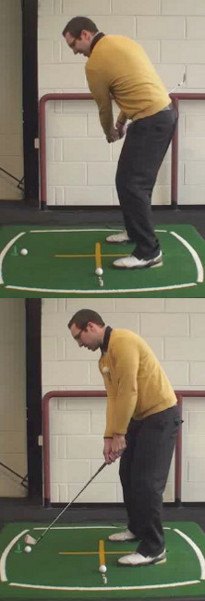You're Correct!
 A shanked iron or wedge shot is possibly the most distinctive and destructive shot in golf.
A shanked iron or wedge shot is possibly the most distinctive and destructive shot in golf.
It occurs when the ball at impact is struck with the hosel of the club and shoots right.
The shot is almost always a “round breaker” because of the physical impact it leaves on the scorecard but also the mental distress it imparts. It is not uncommon for a golfer who shanks the ball to suddenly hit three or four more, such is the way it can affect a player.
Because the hosel on a golf club is deeper on wedges and short irons the shank shot is normally associated with these clubs although they can also occur on longer clubs. If you suspect you are hitting a shank, the ball will normally leave a mark on the hosel. When practicing, a great way to see where the ball is contacting the club head is to dust the balls with talcum powder. As the balls are struck they will leave a residue on the club and show accurately where the ball is being hit. If the mark on the club head is from the heel and the ball flies off sharply to the right then you will have hit a shank. Players can hit shanks when the club travels into the ball on a very exaggerated inside to out or outside to in club path. In both circumstance the heel reaches the ball first.
If you are hitting a shank, try to identify which swing path you have. Once this has been identified you can work on correcting the path. Another common problem with hitting shanks is when players stand too close to the ball. Try to ensure you have enough room at set up.
Shanks are caused by hosel contacts but the cure will begin by identifying the cause.
Sorry Try Again! - See Explanation Below
If the club face is wide open at impact the ball will fly a long way to the right. However, the ball will travel in that direction because the club face points in that direction not because of a hosel strike. It is important to identify the difference as the change needed could be different.
Sorry Try Again! - See Explanation Below
A very in-to-out swing path could cause the club to reach the ball with the hosel first, however, the same is true for a very out-to-in path. Its simply not true that a shank is caused only by and in-to-out path.
Sorry Try Again! - See Explanation Below
The mental damage caused by hitting a shank is well documented but the faults will always begin with technique. Its amazing how fixing technique and stopping the shanks will improve a players frame of mind.







